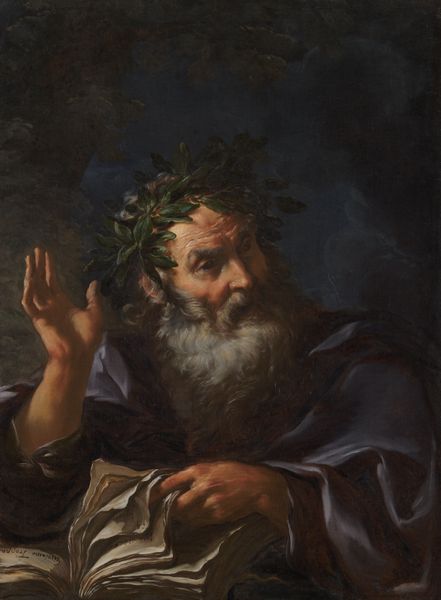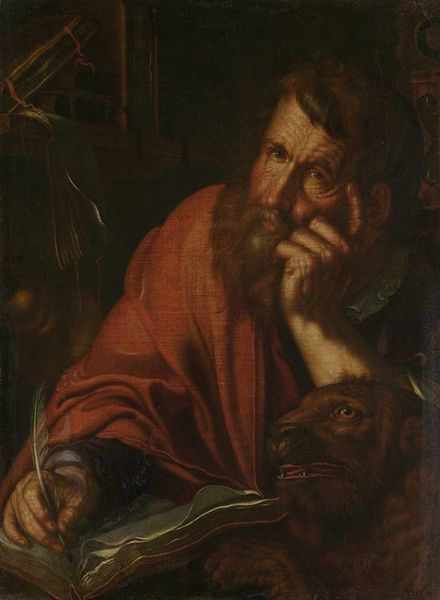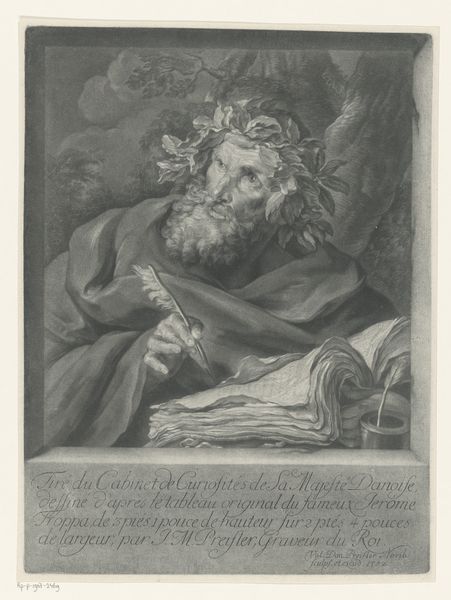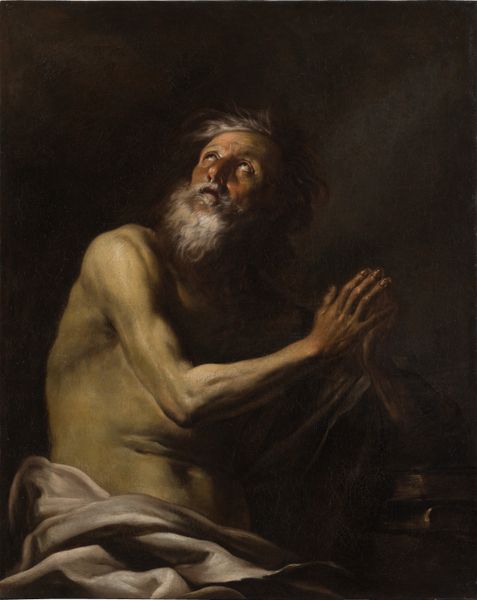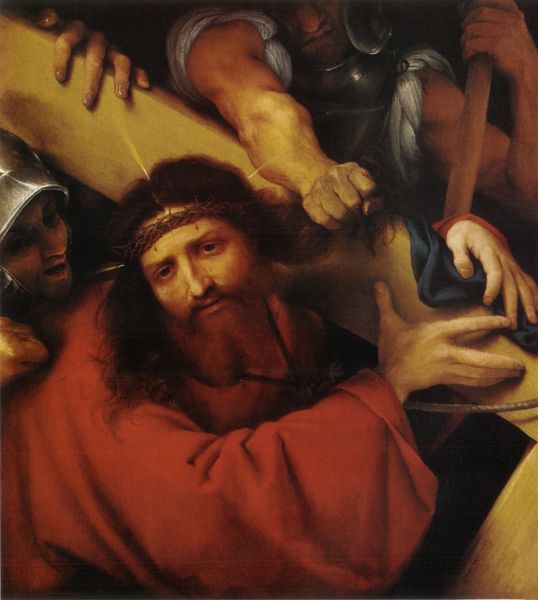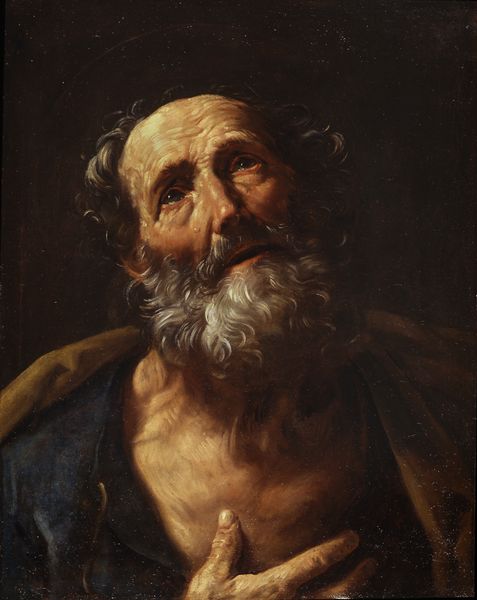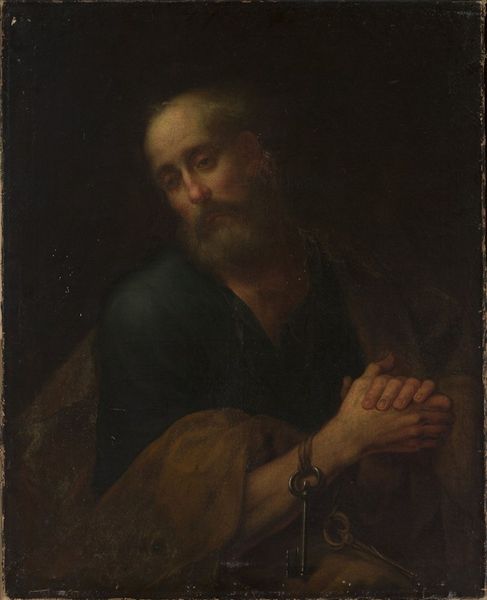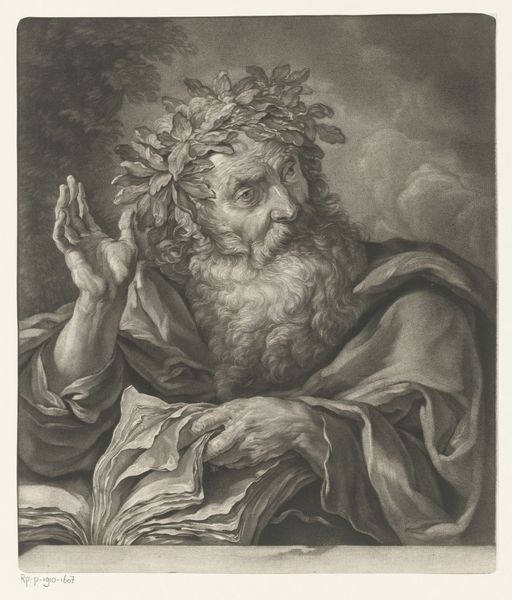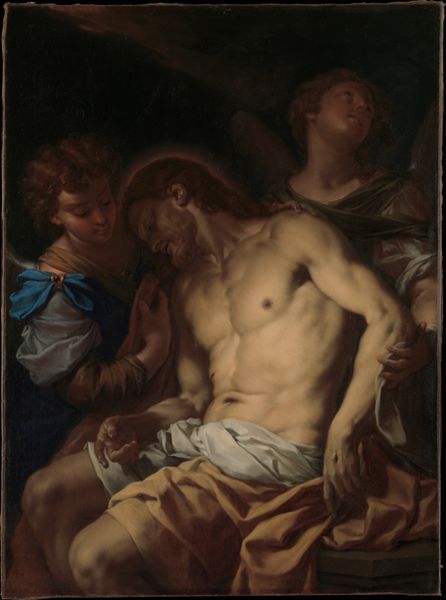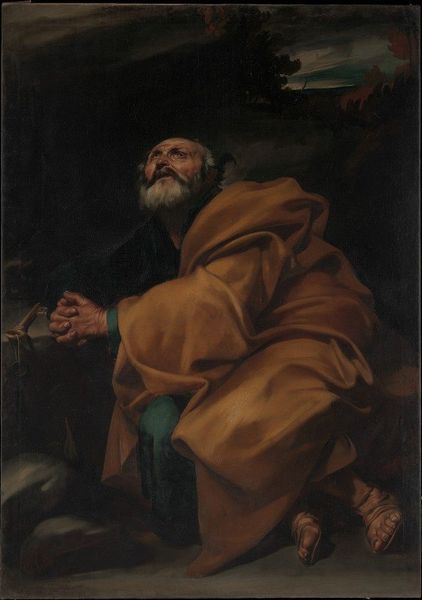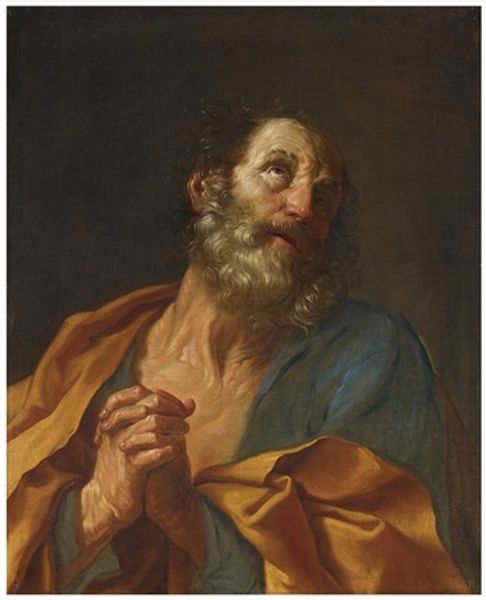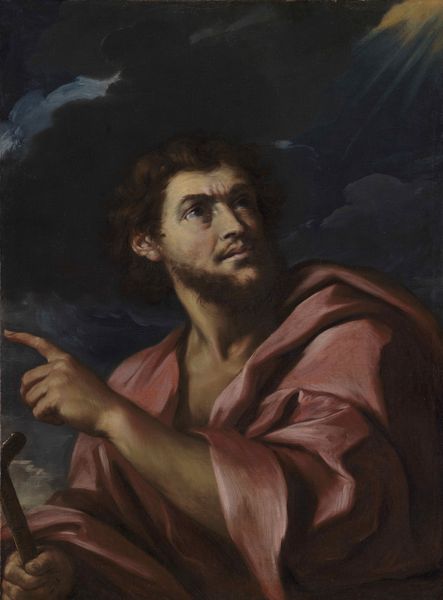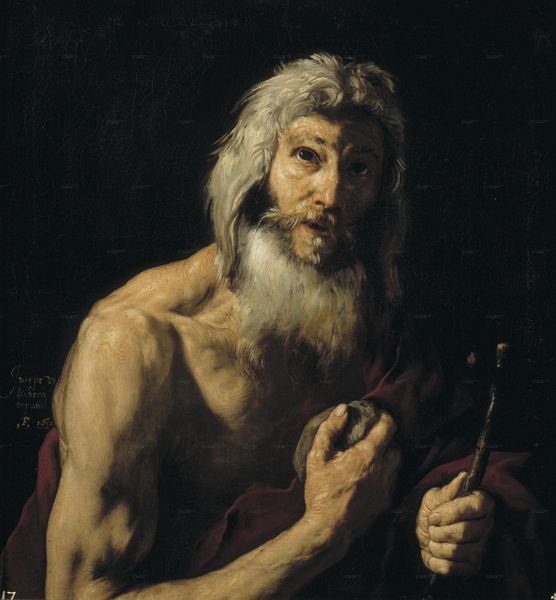
painting, oil-paint
#
portrait
#
baroque
#
painting
#
oil-paint
#
oil painting
#
history-painting
Dimensions: 98 cm (height) x 73 cm (width) (Netto)
Curator: This is "Virgil," an oil painting created by Girolamo Troppa between 1665 and 1668. You can currently find it here at the SMK, Statens Museum for Kunst. Editor: Immediately, I see this beautiful struggle between light and shadow. It’s not quite tenebrism, but there's something about the almost theatrical spotlight on his face. Melancholy. Deeply thoughtful. What's he pondering, I wonder? Curator: Troppa, working within the baroque tradition, really understood drama. It is not just in the light, but look how he frames Virgil’s thoughtful gaze upwards with the heavy drape of fabric and looming presence of the dark, gnarled tree in the background. Troppa had been studying classical authors. His inclusion in private homes might be connected to that social movement of the age, focusing on human intellectual progress. Editor: Progress, perhaps. The man is clearly labouring on this piece; it looks like he has not slept in days. Even that laurel wreath atop his head seems slightly… disheveled, as if his genius requires constant exertion. It makes you consider how much the canon depends on personal cost. He almost appears a common beggar. I want to offer him bread. Curator: Interesting. It's true, there’s a grounded quality. He is wearing simple robes rather than glorious garments. However, you do have to consider that he could simply have modeled for this piece. So many of these portraits are not as genuine or immediate as we think. Editor: Well, the painting is still real and present for me! Despite the darkness, or maybe because of it, he almost jumps out of the canvas, pleading. Perhaps to complete the task, the poem? It looks exhausting. Curator: It is an intimate portrayal. Considering the limited circles of those who could afford artworks like this, perhaps such intense portraits would remind their owner to remain humble, remembering to think before speaking and doing. Editor: He also reminds me, as someone always striving in the arts, how powerful inspiration can be and how taxing, at times. Curator: Yes, I think seeing an artist who's now long gone shows that those internal battles continue and may offer comfort to other creative souls through time.
Comments
Join the conversation
Join millions of artists and users on Artera today and experience the ultimate creative platform.
statensmuseumforkunst almost 2 years ago
⋮
Eyes ablaze with inspiration: an idea takes shape while a pen is held poised above the open book. That is how the Italian painter Girolamo Troppa (1637 – circa 1710) depicted his poet-philosopher. The fire and untamed ferocity of creativity is clearly conveyed by the fiery eyes and the tousled beard. The poet-philosopher leans across a book whose pages he is about to fill with great thoughts. The text of the book cannot be deciphered, except for a single line – the artist’s signature. Troppa’s poet-philosopher is one of a series of four paintings featuring half-length portraits of emotionally agitated men, enraptured by the forces of creative imagination or religious pathos. The paintings are nocturnal scenes in which the moon stands out as a bright nimbus against dark clouds in a blue-black sky. The paintings were purchased for the Danish king Frederik III (reign 1648–72) as ‘Four portraits of ancient philosophers’, but now we identify the four men as Homer, Virgil, John the Baptist and The Penitent St Peter.
